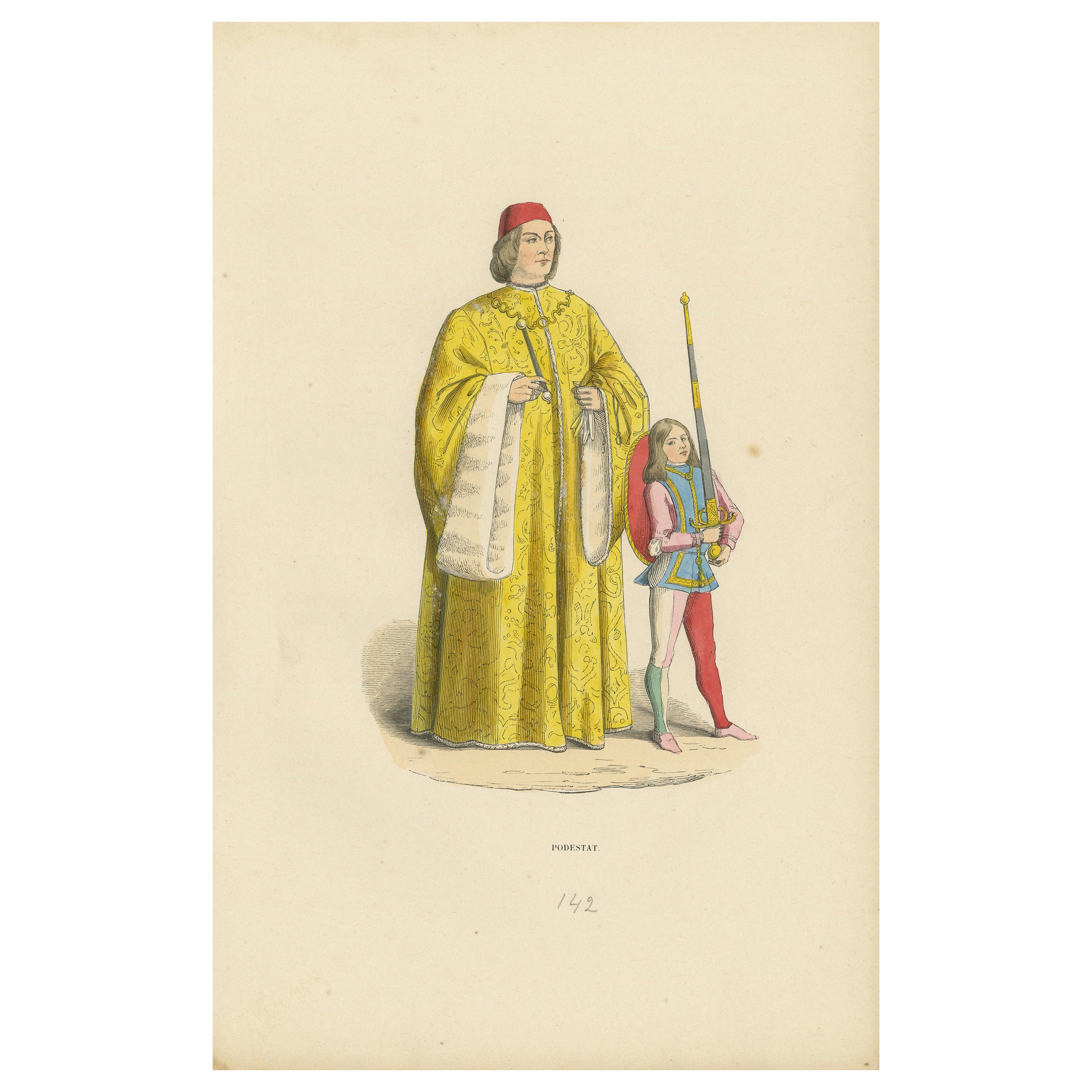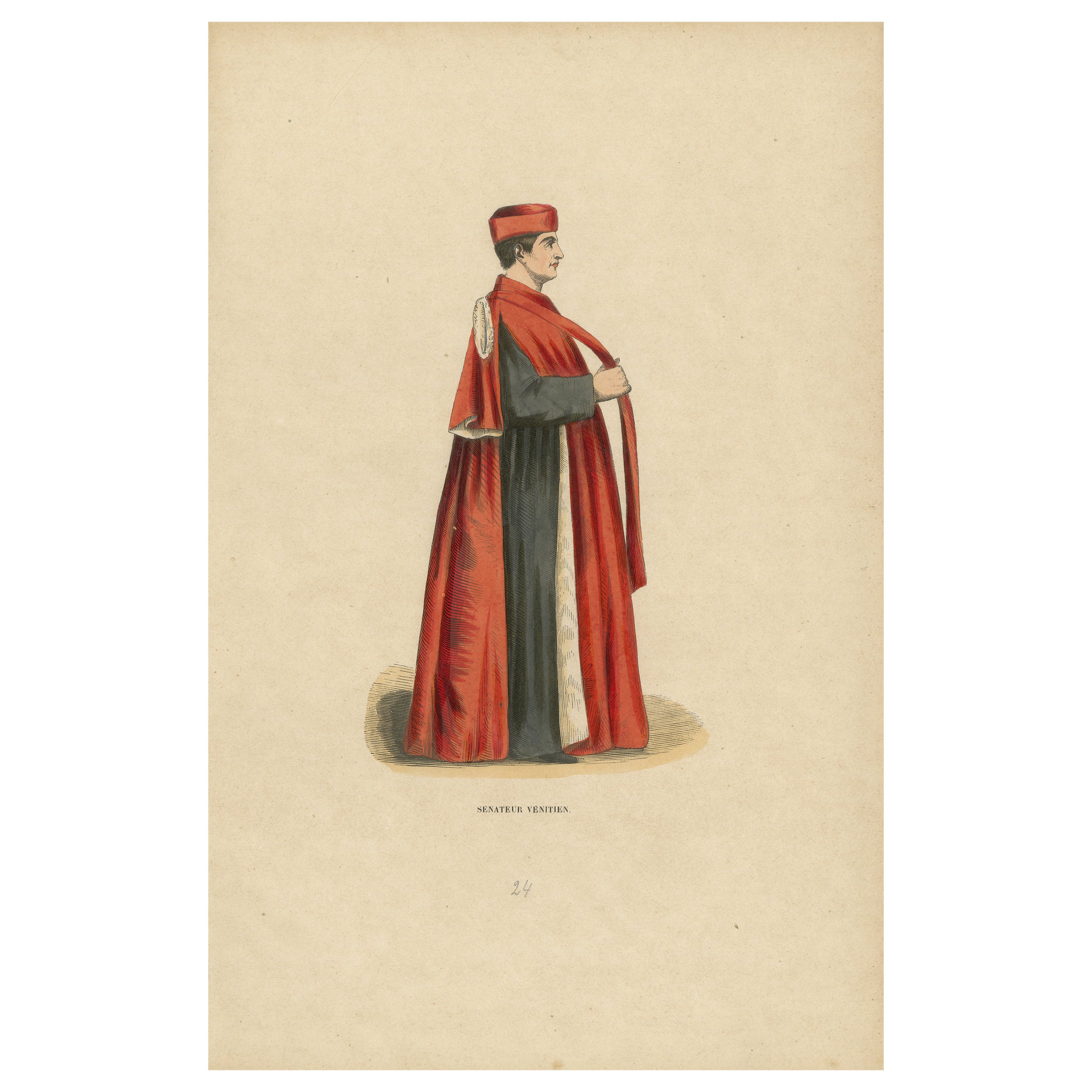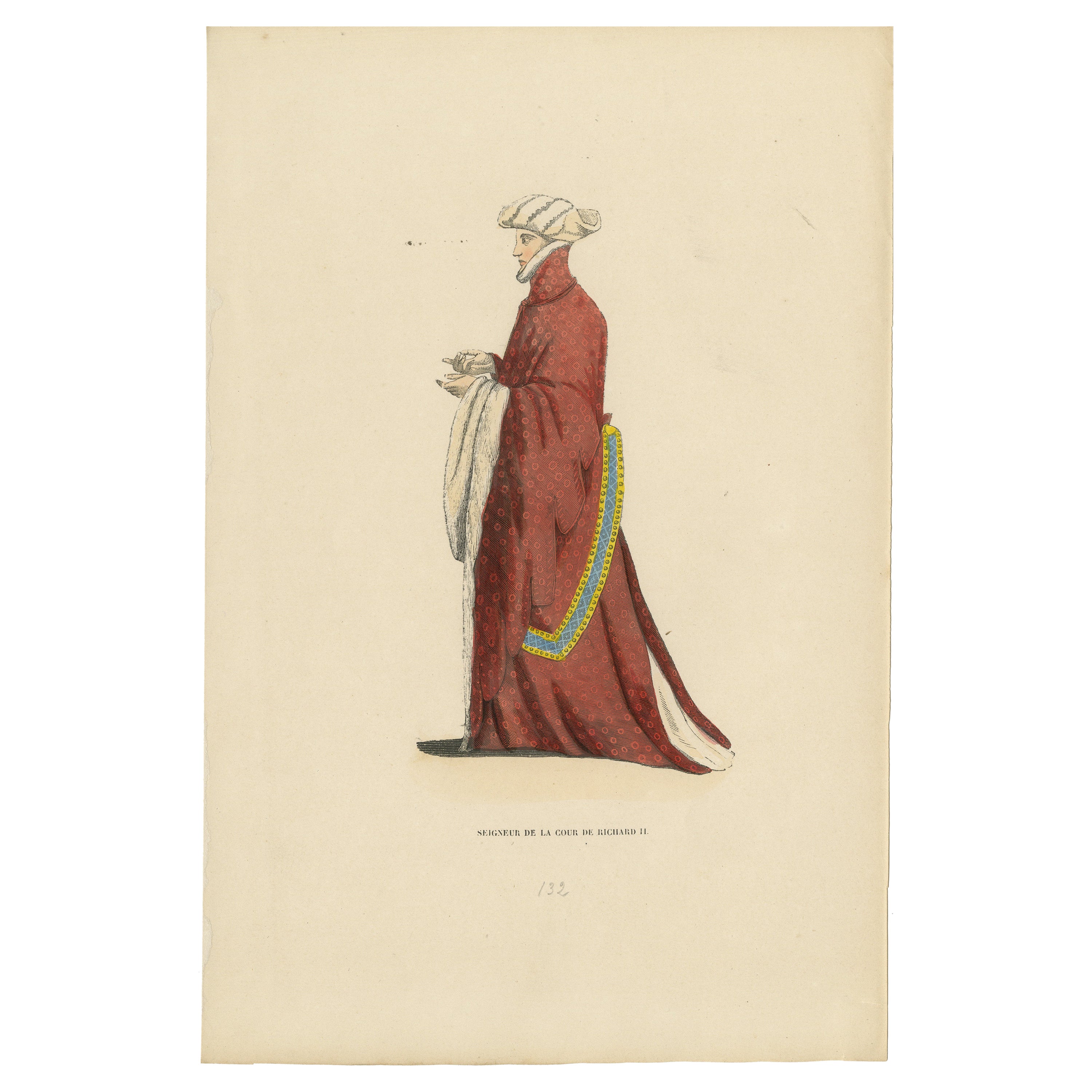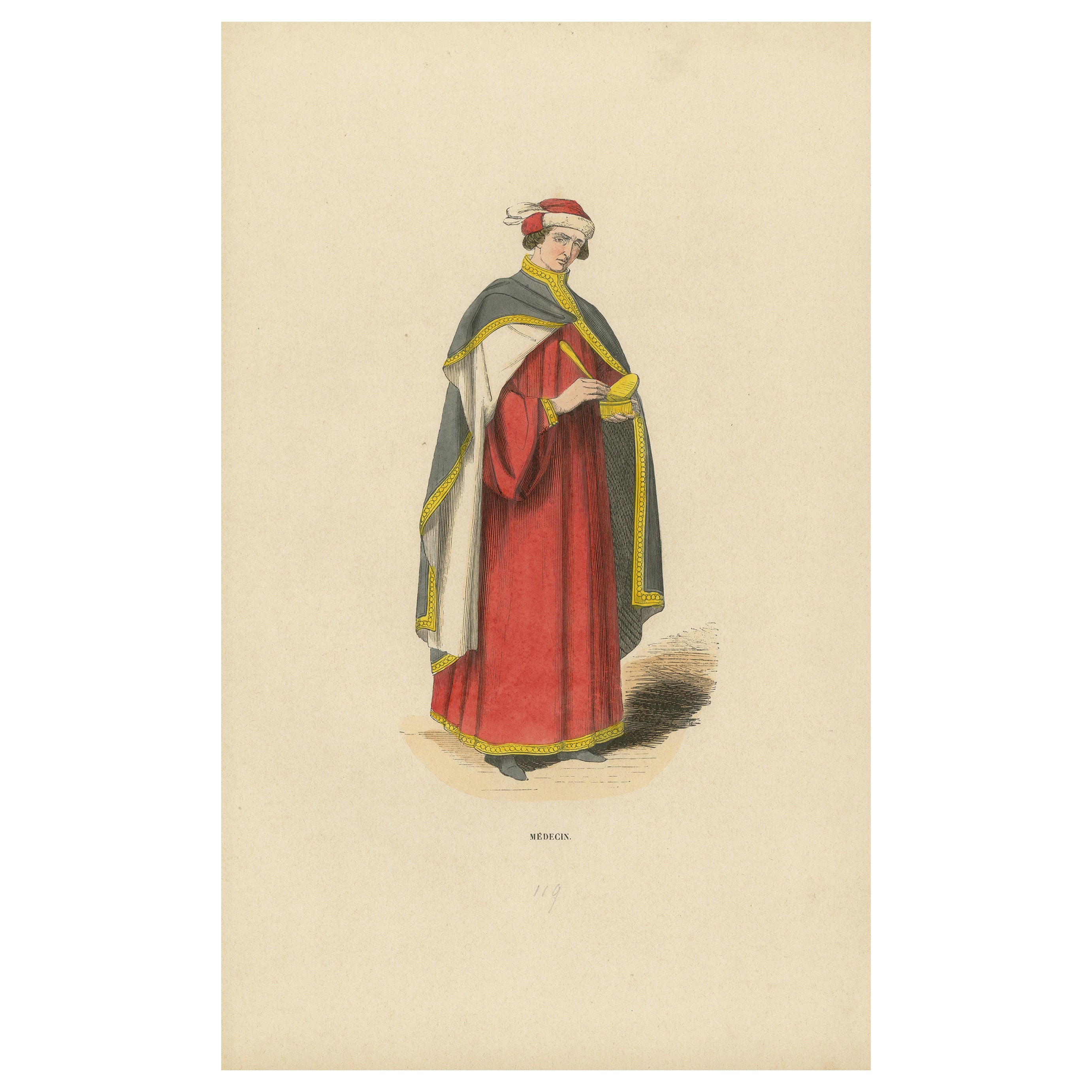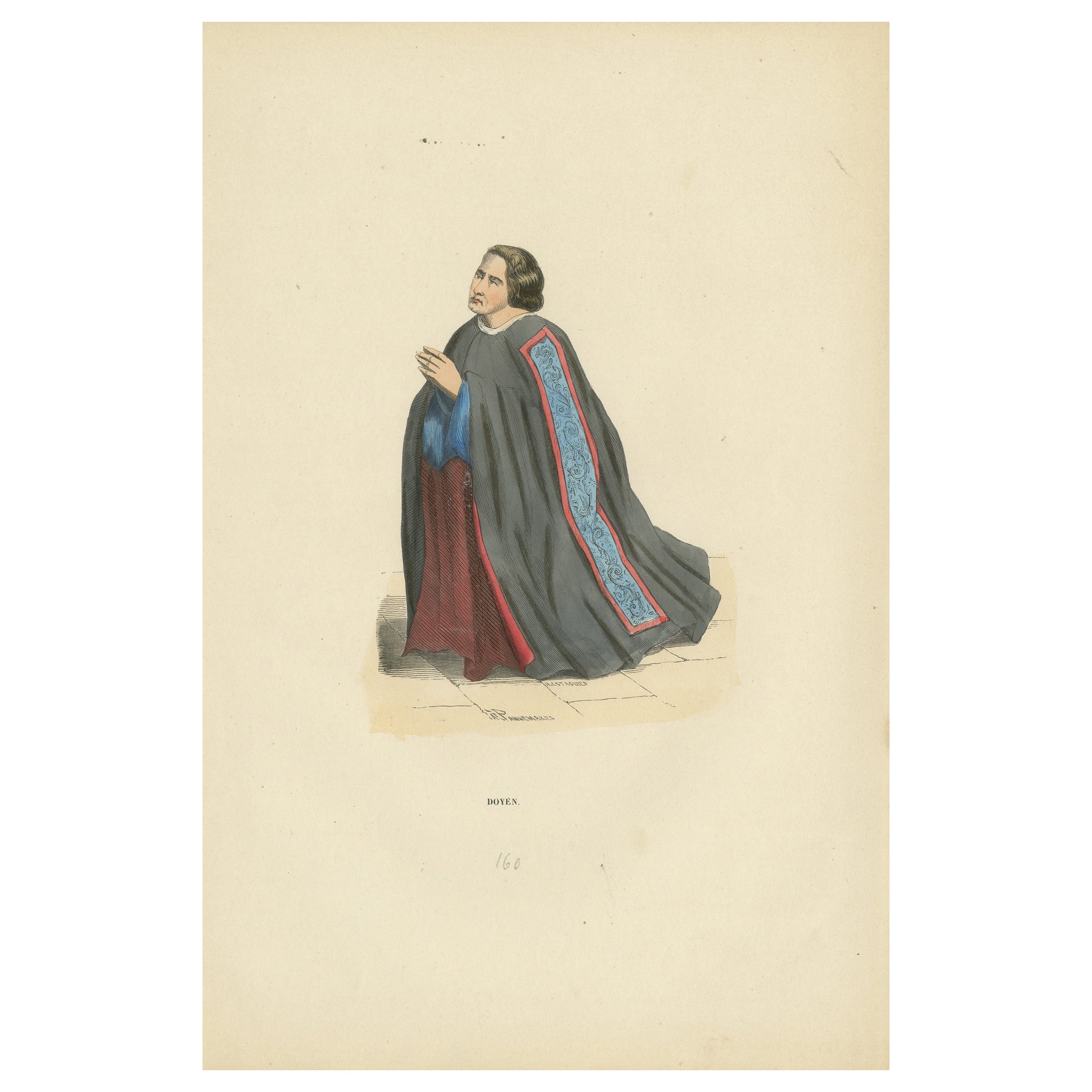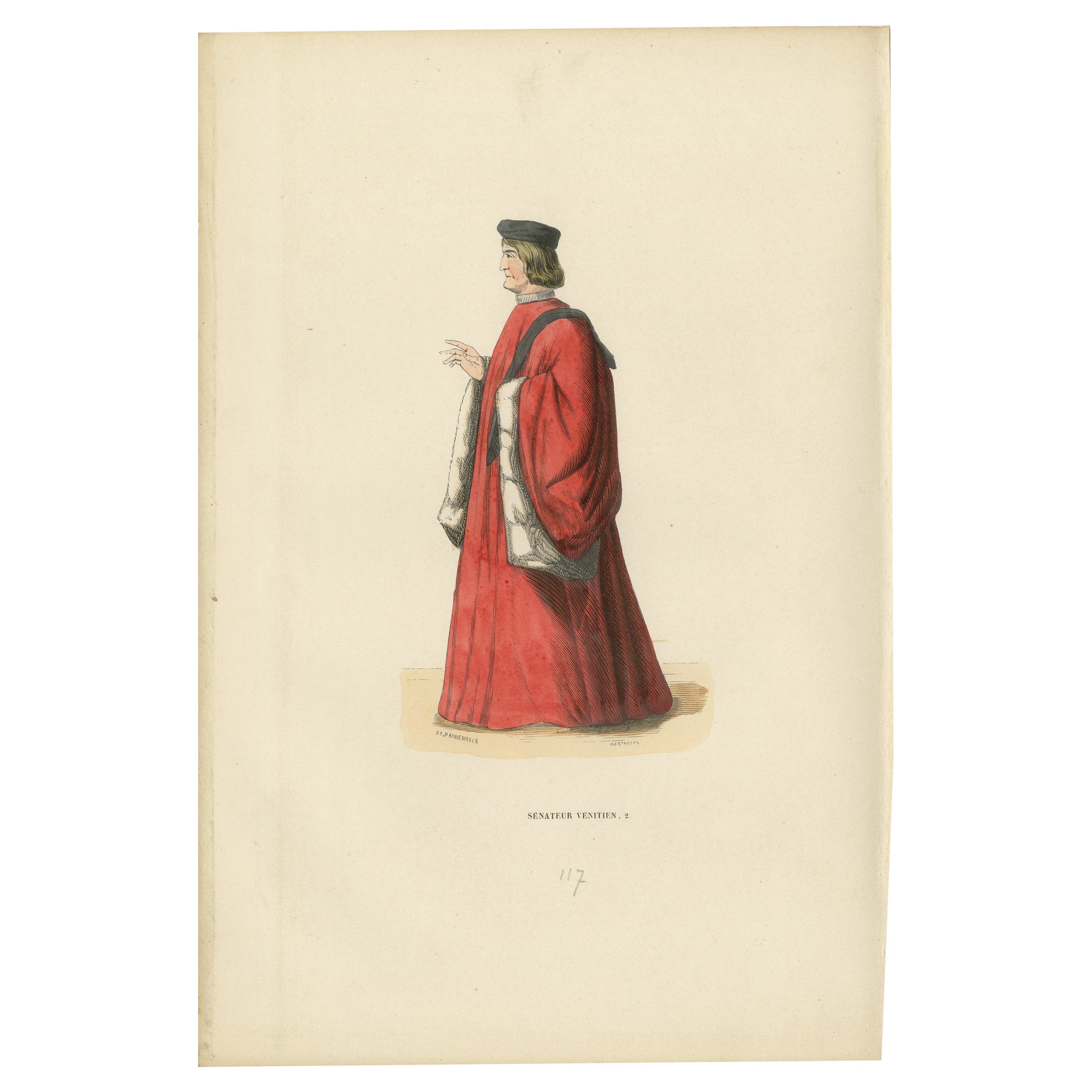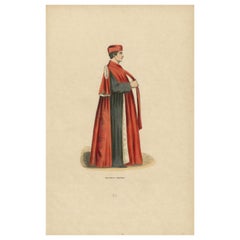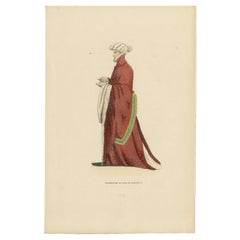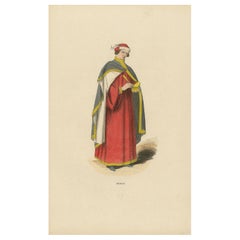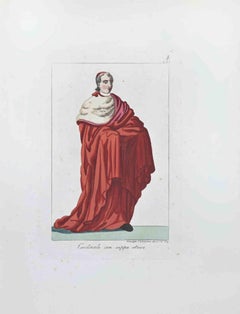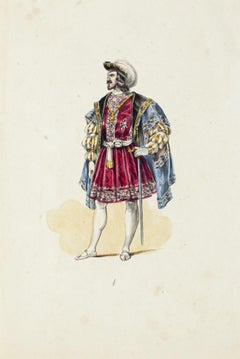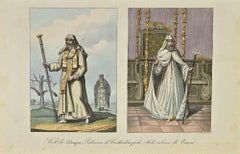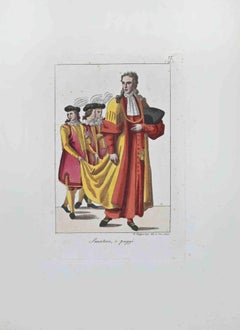Items Similar to The Esteemed Jurist: A Magistrate's Robe in an Original Lithograph, 1847
Want more images or videos?
Request additional images or videos from the seller
1 of 6
The Esteemed Jurist: A Magistrate's Robe in an Original Lithograph, 1847
$163.33
$204.1720% Off
£120.30
£150.3720% Off
€136
€17020% Off
CA$222.20
CA$277.7520% Off
A$246.92
A$308.6520% Off
CHF 129.39
CHF 161.7320% Off
MX$3,028
MX$3,784.9920% Off
NOK 1,650.26
NOK 2,062.8220% Off
SEK 1,552.50
SEK 1,940.6320% Off
DKK 1,035.35
DKK 1,294.1820% Off
Shipping
Retrieving quote...The 1stDibs Promise:
Authenticity Guarantee,
Money-Back Guarantee,
24-Hour Cancellation
About the Item
Title: "The Esteemed Jurist: A Magistrate's Robe in 'Costume du Moyen Âge'"
Description: This lithograph, originating from the mid-19th century "Costume du Moyen Âge" series, presents a magistrate clothed in official judicial regalia. The figure is depicted gesturing with an outstretched arm, perhaps in the act of delivering a verdict or addressing a courtroom.
The magistrate's robe is a rich tapestry of color and detail, indicative of his high status in the legal hierarchy. The outer garment is a vibrant crimson, lined with ermine, a symbol of authority and justice. A golden-yellow under-robe, visible beneath the crimson outer layer, adds to the opulence of the ensemble, featuring elaborate designs that likely signify the magistrate's legal jurisdiction or personal coat of arms.
A red cap, trimmed with gold, adorns his head, marking his office and complementing the color scheme of his attire. The cap's shape and style align with the fashion of the day for those in positions of governance and law.
His expression is solemn and thoughtful, befitting the seriousness of his role in administering justice. The meticulous detailing of his robes, from the fur lining to the intricate patterns, reflects the respect and esteem granted to legal officials in the Middle Ages.
This image not only captures the fashion of a magistrate of the period but also serves as a visual testament to the esteemed position such legal figures held in society. It underscores the importance of dress as a reflection of societal roles and the rule of law during the medieval era.
The colors have a nice glow over them. Historically, egg whites, known as glair, and sometimes egg yolk were indeed used in illumination and painting, particularly in manuscripts, to give colors a brighter appearance and to add a sheen or gloss to the work. This technique was quite common during the Middle Ages and into the Renaissance.
Egg whites can be applied as a varnish over pigments to enhance their brightness and to protect the colors. This application could make the colors appear more vivid and also add a slight glossy sheen to the surface of the image.
Egg yolk, on the other hand, was commonly used as a binding agent in paint. It forms the basis of tempera paint, a medium that was widely used before the advent of oil painting. Egg yolk helps to create a durable and long-lasting color that adheres well to various surfaces.
In the context of the print from 1847, it's less likely that egg whites or yolks were used directly on the print, as by that time, commercial printing processes would have been more advanced and less reliant on such manual methods. However, if this print is a representation of an earlier style or is meant to mimic the appearance of hand-painted manuscripts, the original artists might have employed techniques or materials that gave a similar effect to those achieved with egg-based binders and varnishes.
- Dimensions:Height: 10.63 in (27 cm)Width: 7.09 in (18 cm)Depth: 0 in (0.02 mm)
- Materials and Techniques:
- Period:
- Date of Manufacture:1847
- Condition:Good. Overal light toning and light soiling but the image itself clean and hand-colored almost 200 years ago and still in expliciet colors. Aged paper with typically warm, yellowish-brown hue, mostly around the edges. Study the images carefully.
- Seller Location:Langweer, NL
- Reference Number:Seller: BG-13635-1311stDibs: LU3054337928942
About the Seller
5.0
Recognized Seller
These prestigious sellers are industry leaders and represent the highest echelon for item quality and design.
Platinum Seller
Premium sellers with a 4.7+ rating and 24-hour response times
Established in 2009
1stDibs seller since 2017
2,494 sales on 1stDibs
Typical response time: 1 hour
- ShippingRetrieving quote...Shipping from: Langweer, Netherlands
- Return Policy
Authenticity Guarantee
In the unlikely event there’s an issue with an item’s authenticity, contact us within 1 year for a full refund. DetailsMoney-Back Guarantee
If your item is not as described, is damaged in transit, or does not arrive, contact us within 7 days for a full refund. Details24-Hour Cancellation
You have a 24-hour grace period in which to reconsider your purchase, with no questions asked.Vetted Professional Sellers
Our world-class sellers must adhere to strict standards for service and quality, maintaining the integrity of our listings.Price-Match Guarantee
If you find that a seller listed the same item for a lower price elsewhere, we’ll match it.Trusted Global Delivery
Our best-in-class carrier network provides specialized shipping options worldwide, including custom delivery.More From This Seller
View AllCivic Pride: A Podestà's Robe in 'Costume du Moyen Âge', Genuine Lithograph 1847
Located in Langweer, NL
Title: "Civic Pride: A Podestà's Robe in 'Costume du Moyen Âge'"
Description: This detailed lithograph from the 1847 "Costume du Moyen Âge" collection features a Podestà, a chief ma...
Category
Antique 1840s Prints
Materials
Paper
$134 Sale Price
20% Off
In Council and Commerce: A Venetian Senator in Robes of Office, 1847
Located in Langweer, NL
The image portrays a figure labeled "Sénateur Vénitien," which translates to "Venetian Senator." The Venetian senator is shown in a profile view, wearing traditional senatorial robes...
Category
Antique 1840s Prints
Materials
Paper
$153 Sale Price
20% Off
Aristocratic Elegance: A Lord of Richard II's Court, Original Old Print of 1847
Located in Langweer, NL
Title: "Aristocratic Elegance: A Lord of Richard II's Court in 'Costume du Moyen Âge'"
Description: This lithograph from "Costume du Moyen Âge," dated 1847, presents a nobleman from...
Category
Antique 1840s Prints
Materials
Paper
$153 Sale Price
20% Off
Attire of a Medieval Scholar: The Learned Physician of the Middle Ages, 1847
Located in Langweer, NL
Title: "Attire of a Medieval Scholar: The Learned Physician of the Middle Ages"
This hand-colored lithograph, titled "Médecin" in the original French, is a detailed portrayal of a m...
Category
Antique 1840s Prints
Materials
Paper
$144 Sale Price
20% Off
The Revered Doyen: A Portrait of Venerable Leadership, Lithograph Published 1847
Located in Langweer, NL
This original antique lithograph for sale depicts a historical figure known as a "Doyen," which typically refers to the senior member of a body or group. This individual is portrayed...
Category
Antique 1840s Prints
Materials
Paper
$124 Sale Price
20% Off
Eminent Venetian Senator in Traditional Robes: A Portrayal of Political Prestige
Located in Langweer, NL
"Sénateur Vénitien" (Venetian Senator)
Description: This hand-colored engraving from the 1847 series "Costume du Moyen Age" depicts a Venetian senator, a prominent political figure ...
Category
Antique 1840s Prints
Materials
Paper
$163 Sale Price
20% Off
You May Also Like
The Cardinal Wearing the Cape - Etching by Giuseppe Capparoni - 1827
Located in Roma, IT
The Cardinal wearing the cape is an Artwork realized in 1827 by the Engraver, Giuseppe Capparoni (Rome 1800- 1879).
Etching hand colored on ivory paper. Signed on plate and dated on...
Category
1820s Modern Portrait Prints
Materials
Etching
Theatrical Costume - Original Lithograph - Early 20th Century
Located in Roma, IT
Theatrical Costume is a splendid hand lithograph engraved by Anonymous Artist in the Early 20th Century.
The state of preservation of the artwork is e...
Category
Early 20th Century Modern Figurative Prints
Materials
Lithograph
Cologeri's Robes - Lithograph - 1862
Located in Roma, IT
Cologeri's Robes is a lithograph on paper realized in 1862.
The artwork belongs to the Suite Uses and customs of all the peoples of the universe: " History of the government, of the...
Category
1860s Modern Figurative Prints
Materials
Lithograph
The Senator and the Pages - Etching by Giuseppe Capparoni - 1827
Located in Roma, IT
The Senator and the Pages is an Artwork realized in 1827 by the Engraver, Giuseppe Capparoni (Rome 1800- 1879).
Etching hand colored on ivory paper. Signed on plate and dated on the...
Category
1820s Modern Portrait Prints
Materials
Etching
The Bishop - Etching by Giuseppe Capparoni - 1828
Located in Roma, IT
The Bishop is an Artwork realized in 1828 by the Engraver, Giuseppe Capparoni (Rome 1800- 1879).
Etching hand colored on ivory paper. Signed on plate and dated on the right margin....
Category
1820s Modern Portrait Prints
Materials
Etching
Ancient Costume - Original Lithograph - Mid 19th Century
Located in Roma, IT
Ancient Costume is an original lithograph hand-colored, realized by an anonymous artist of the XIX century
The state of preservation of the artwork is...
Category
Mid-19th Century Figurative Prints
Materials
Lithograph
More Ways To Browse
Fur Trim Dress
Art Deco Glass Shelving
Astronomical Clock
Baker New World Collection
Baroque Headboard
Bear Bookends
Bi Discs
Birds Of Paradise China
Black Cerused Dining Table
Black Iron Beds
Black Victorian Bed
Blanket Chest Dome
Boston Sculpture Company
Boston Terrier
Bow Front Glass Cabinet
Brass Antelope
Brass Crane Bird
Brass Elephant Tusks
